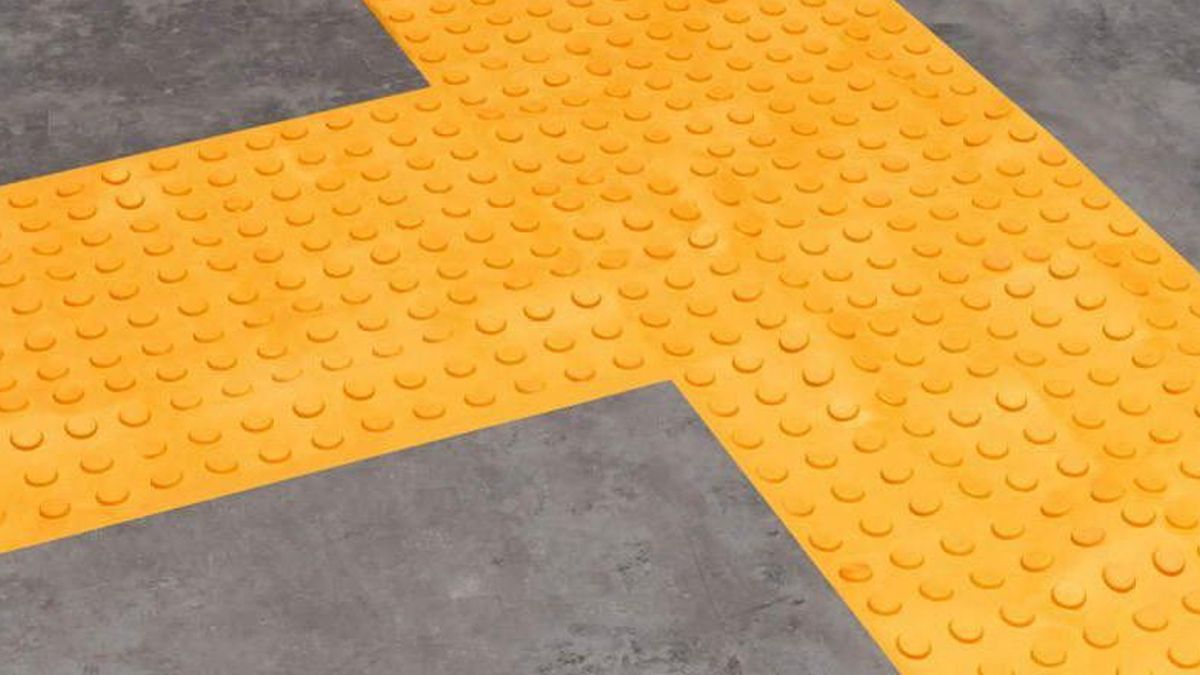People with disabilities face two daily challenges: overcome physical barriers and knock social prejudices. Millions of people with difficulties visuals find in the Podotactile tiles An indispensable ally to move independently and safely, an invention that was born with a noble purpose and today is synonymous with global accessibility.
This ingenious system, which facilitates mobility and guarantees security in public spaces, has a humble and moving origin. It all started in Japan thanks to Seiichi Miyakewho transformed a need into a universal legacy that changed the way we design the cities.
tile-podotactile-subte.jpg
Millions of people with visual disabilities can access various places thanks to this invention
How podotactile tiles were made
In 1965, Japanese engineer Seiichi Miyake decided to allocate his savings to help a friend whose view began to deteriorate. Thus the first tactile blocks were born, also known as Tenji blocks, which are characterized by easily identifiable patterns to the touch, both with a cane and with the feet.
The initial blocks presented two key designs: points to warn about risk areassuch as dangerous crosses or the edge of platforms, and bars to guide users On safe journeys. This simple but brilliant idea materialized in tiles that not only warn about possible dangers, but also guide people towards their destination safely.
The first public implementation of these tiles occurred in 1967, On a path close to a school for blind people in the city of Okayama, Japan. Later, in the 1970s, its use extended to the Japan National Railways, marking a before and after in the accessible infrastructure of the country.
The functional design of the tiles, combined with their characteristic bright yellow color, made them visible even for people with reduced vision. This comprehensive approach allowed the system to gain recognition and became a global accessibility standardadopted in trains, hospitals, airports and shopping centers around the world.
Made of materials such as rubber, cement, metal or polyethylene, these tiles not only improved the quality of life of millions, but also integrated into urban environments, showing that inclusion can be functional and aesthetically harmonious.
Honors to Seiichi Miyake
Seiichi Miyake, born in 1926 in Okayama Prefecture, not only changed his friend’s life, but also that of millions of people with visual disabilities worldwide. His innovation marked a milestone in the history of urban design, becoming a symbol of accessibility and empathy.
The impact of his invention was officially recognized in Japan in 2010, when the March 18 like him “Tenji block day”. On that same date, a monument was inaugurated in honor of Miyake in the place where the first tiles were installed, remembering their contribution to social welfare.
In 2019, Google He also paid tribute to Miyake with a Doodle which showed a person by moving on podotactile tiles with a guide cane. This gesture valued his work and presented it to a global audience, consolidating his legacy as an example of how innovation can be born from empathy and change the world for the better.
Source: Ambito
I am an author and journalist who has worked in the entertainment industry for over a decade. I currently work as a news editor at a major news website, and my focus is on covering the latest trends in entertainment. I also write occasional pieces for other outlets, and have authored two books about the entertainment industry.




